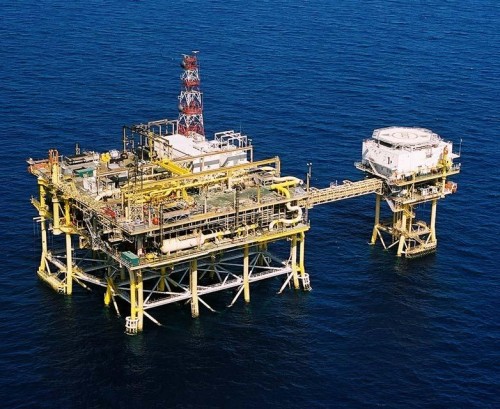
Summer Jade Duplantis
September 20, 2011
Alvin Harding Sr.
September 22, 2011Once oil is extracted, where does it go? And more importantly, how does it get to our houses or into our cars?
The answer is sometimes closer to home than you might think.
The Louisiana Offshore Oil Port (LOOP) has more than 30 years of experience in housing foreign oil and keeping it safe once it’s pulled from beneath the earth’s surface.
“During those 30 years of operations, over 8 billion barrels of crude oil has been offloaded from approximately 8,000 tankers [at our facility],” LOOP Vice President of Business Development Dale Rollins said in an email.
According to LOOP’s website, the company got its start in 1972 as a Delaware corporation. It was converted to an LLC in 1996.
The company is owned by Marathon Pipe LLC, Murphy Oil Corporation and Shell Oil Company.
The way LOOP stores the oil is fairly complex.
Oil is first shipped to the country through tankers carrying the crude to LOOP’s port facility, located at Port Fourchon.
The company has eight underground caverns leached out of a naturally occurring salt dome.
The company’s website says that the caverns are capable of storing 50 million barrels of oil when they are at its fullest capacity.
LOOP also has an above-ground structure consisting of six, 600,000-barrel tanks.
Most of the oil the company manages is foreign.
But LOOP has also housed a large quantity of American oil, in its 30 years.
“[We’ve] also stored and distributed over 2 billion barrels of domestic crude oil from the Gulf of Mexico,” Rollins said.
From its storage facility, the oil must be put to use.
LOOP’s onshore oil storage facility in Clovelly is connected to the Port Fourchon complex by a 48-inch diameter pipeline.
Once there, LOOP’s job is to get the oil to those who can turn it into an effective source of energy.
It does so by shipping the oil to refineries all throughout the Southeast and Midwest.
“Pipelines connected to the Clovelly storage facility tie LOOP to approximately 50 percent of the nation’s refining capacity,” Rollins said.
Because LOOP deals mostly with foreign oil, they have not been as adversely affected by the BP oil spill as other companies in the industry.
Rollins said LOOP’s daily output is almost dead-on its pre-2011 forecast.
“Our year-to-date foreign throughput is very close to our forecasted number, a little over 900,000 barrels per day,” Rollins said.
Even LOOP wasn’t fully immune to the impacts of the spill.
The company provides storage for two of the Gulf’s biggest sweet spots, the Mars and Thunder Horse crude streams.
With drilling delayed, Rollins said those streams have not been flowing as freely as in years past.
“The combined throughput from these two streams is down about 100,000 barrels per day from our forecasted volume,” he said.
The reason for the holdup, according to Rollins is simple, the drilling moratorium and then the subsequent grind for oil companies to get permits.
“We believe the slow pace issuing drilling permits impacted our domestic Gulf of Mexico throughput,” Rollins said.
With the worst of the oil spill over, LOOP will now shift its attention to the future and ultimately toward growth.
Rollins said the company has plans to continue to increase the amount of oil it can house.
“LOOP has been expanding storage capacity for a number of years,” Rollins said. “LOOP constructed a relatively large storage tank farm at Clovelly with a dozen 600,000-barrel tanks operational and three additional 600,000 barrel tanks scheduled for completion next year. In addition to the storage tanks, LOOP has approximately 53 million barrels of cavern storage.”
The business development vice president said LOOP would look to increase its ability to distribute across the country.
He added LOOP would someday like to expand on its 50 percent outreach.
“Our goal is to continue to grow using LOOP’s existing infrastructure, storage and distribution, to attract more domestic Gulf of Mexico production, expand the range of acceptable crude types and make necessary facility modifications to accommodate domestic crude oil arriving on smaller tankers,” Rollins said. “We are also working with other pipeline companies to expand LOOP’s distribution capacity.”
Oil and gas, it’s a multi-billion dollar industry.
A lot of its rewards call the Tri-parish area home.
LOOP has been one of the largest forces behind that, three decades strong.
Pictured is an offshore oil rig nested in the Gulf of Mexico. Once oil is extracted from the rig, it’s sometimes stored with LOOP, who is going on three decades of housing extracted oil before it’s sent to refineries. FILE PHOTO










